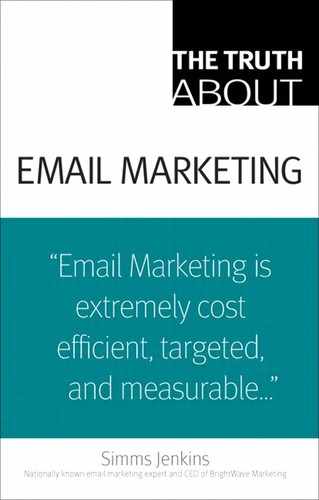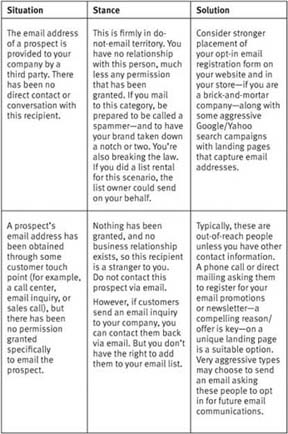Truth 41. The varying levels of permission
Most experienced and legitimate marketers who use email marketing will tell you they practice permission-based email marketing. Who wants to be grouped in with the spammers pitching pharmaceutical panaceas or seeking your stateside assistance with a financial transaction?
However, in practice, there are many large brands and companies who define “permission” at their convenience instead of the intended status of recipients, but it is the recipients who should hold the cards on who they receive emails from.
A recent car-buying experience that took place largely on the Internet shed much light on how many companies view email marketing and their “right” to do so, regardless of your relationship with them (or lack thereof). After sending email inquiries to many dealers, I found that I was added to their “newsletter” database, despite the fact that I had no communication with them, outside of the initial email. These were poorly executed email campaigns, but the bigger and more important issue is their interpretation of permission. None was implied or given. Making matters worse, the unsubscribe process involved sending an email to an address that did not work. So technically, this dealership not only is way off on best practices, but also is violating CAN-SPAM.
Permission is defined by Merriam-Webster as the act of permitting and formal consent. The same definition applies to email marketing, although the concept of explicit permission is taking it one step forward, and what is the best practice standard in the opt-in email marketing world. The most straightforward and nondebatable way to embrace permission marketing is to officially and unequivocally obtain permission. Yet, many marketers take the liberty to stretch this into a more open-ended and vague marketing relationship. All email marketers should be aware of the potential downsides to this strategy, which can include but are not limited to alienating customers, killing relationships with prospects, getting into trouble with ISPs, and more.
When it's okay to send email
The following list outlines some appropriate situations where true permission is obtained:
![]() Opt-in form on your website.
Opt-in form on your website.
![]() Opt-in form in your store or at events. (Remember to have a privacy policy handy, just like you have available on your website.)
Opt-in form in your store or at events. (Remember to have a privacy policy handy, just like you have available on your website.)
![]() Opt-in form on a partner website. Co-registration works well if it is clear what the users are opting in to receive. Misleading partner sites will result in a lose-lose situation. You will pay for the registration, and then the recipient will unsubscribe or not respond to your emails.
Opt-in form on a partner website. Co-registration works well if it is clear what the users are opting in to receive. Misleading partner sites will result in a lose-lose situation. You will pay for the registration, and then the recipient will unsubscribe or not respond to your emails.
So by adhering to these not-so-complicated standards, you will be in the good graces of following peer best practices and industry standards. Remember: Your job isn't completely done when you gain users’ permission and store the data properly. You must be CAN-SPAM-compliant.
Real permission email marketing works best when true permission is given and there is no wiggle room to debate when/how/if permission was truly established.
Is there a gray area?
Is it ever acceptable to email customers or prospects who have not granted permission for you to do so? Bear in mind that email marketing is like dating; if you have met the person before or have been introduced through a friend, chances are better that you will hit it off.
The following table shows three common situations that might arise where a marketer might be tempted to send an email even though explicit permission hasn't been given.
Why risk all the hard work you have done for a quick shortcut that most likely won't be fruitful? Your opt-in house list will be the best-performing audience. So stick with it.
Additional resources
If you are unclear of where your email marketing campaigns stand in this area, you should initiate a complete and focused audit of your permission-based email operations and CAN-SPAM compliance. Outside eyes usually uncover a lot more than internal ones. A specialty email firm is your best bet to ensure full observance of these essential email marketing practices and requirements.


